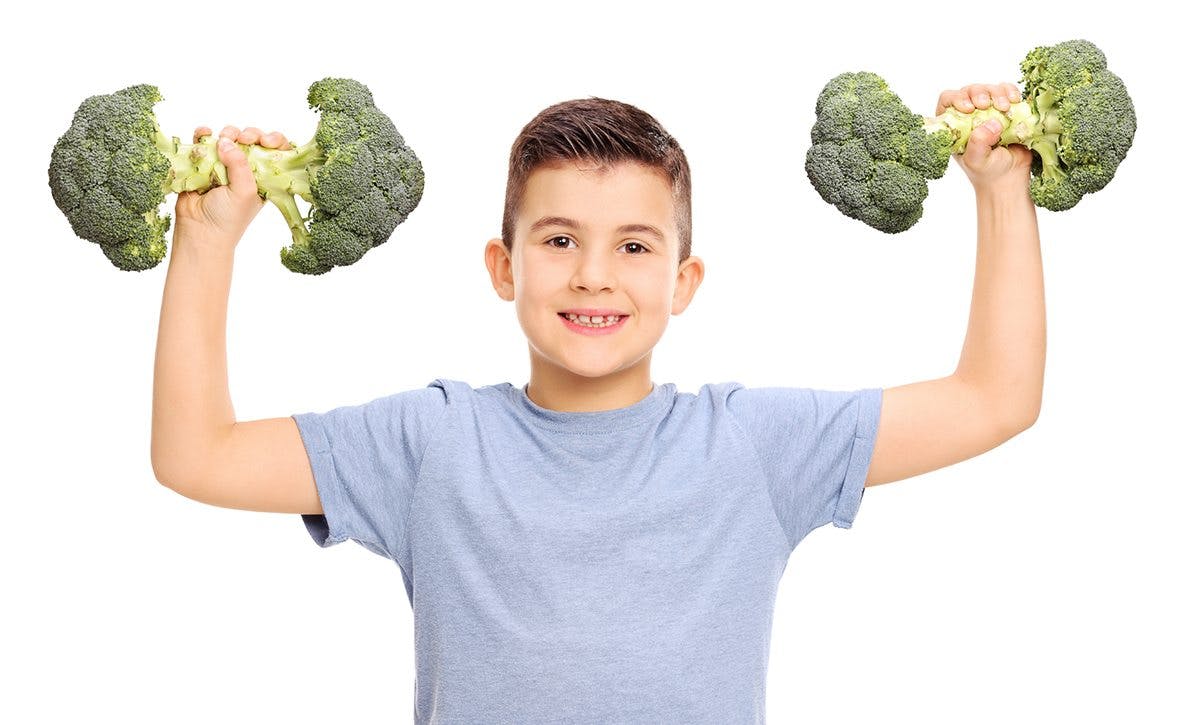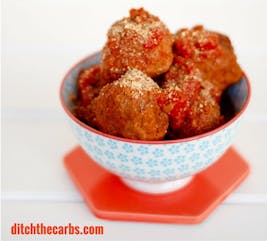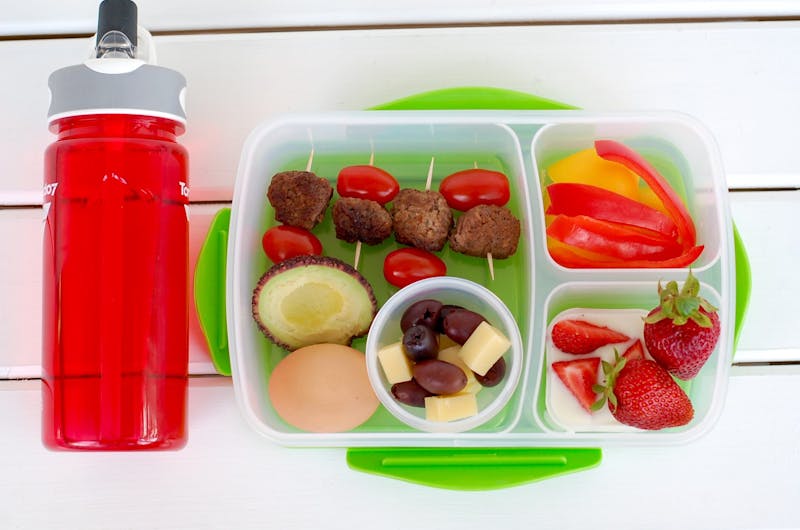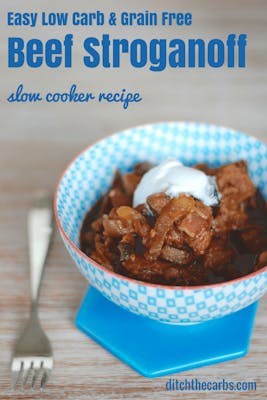How to help transition your children to low-carb real food

This is a guest post from Libby Jenkinson, a registered pharmacist, mother of 3 children, and the founder of ditchthecarbs.com, the leading low-carb website in New Zealand and Australia.
How to transition children to low carb
Following my previous article, there was an enormous response from parents. It was incredibly clear that parents want to know how to transition their children to low carb real food.
We all want our children to eat real food and healthy options, but how do we actually go about it? How do we remove the processed food, sugars and inflammatory oils without having a family mutiny? Below are my 10 top tips to help transition your child to a low carb real food life.
1: Start slowly

Start with their breakfasts. Explain how cereals are more akin to desserts so you are going to slowly remove them from the house. Begin with something to replace the cereals you know they will love. It could be scrambled eggs with cheese, bacon and eggs, last night’s leftovers (see below), sausages, a low carb smoothie or you can start to make some grain free granola or low carb waffles. Don’t go too crazy at the start making special meals, this new way of eating has to be sustainable and if you think you are setting yourself up for a lifetime of making waffles each morning, you’ll resent it and give up. Be easy on yourself and your children. As each box of cereal leaves the house, don’t make a fuss, just don’t replace it.
2: Leftovers are king



3: Ditch the bread
This doesn’t have to be tricky. Set yourself the goal that each week you will create a bread free lunchbox twice a week. If your child is really resistant, try even cutting back to thin bread or thin wraps. Eventually bread will make less of an appearance in their lunch boxes until you get to the point where bread is no longer in the house, or it makes a very rare appearance. Some great healthy low carb alternatives to bread are lettuce wraps, cold meat wraps or low carb pizza waffles.
4: School lunch boxes
It can be daunting to think how to even start a school lunchbox if you have been relying on the standard muesli bars, packets of rice crackers, and a ham sandwich. You just need ideas, and plenty of them. Start looking at meals in a new way. Ignore the marketing hype that certain packaged foods are great for a lunchbox and go back to basics. Don’t worry, I’m not even going to suggest you start cutting little animal shapes out of cheese, or creating carrot flowers, we’re all to busy for that. In the morning rush we want to throw some things together that we know will be eaten and not thrown in the trash can. I can’t emphasize this enough, but cook double dinners and have vegetables already sliced in the fridge ready to go.



5: Involve your children
Start asking them what they like, make a list. You may be surprised by how many real food options they will give you. Add new foods to their list as they enjoy new flavours and textures. They will be so proud of themselves as their list grows.
Start looking through the low carb recipes and print/save recipes chosen by your child. Let them create their own cookbook. Take them to the vegetable store and allow them to choose whatever they would like and see if they can dream up a new recipe to use it. Make it fun and make it simple.
6: Drink water only



Absolutely NO fizzy drinks, energy drinks or fruit juice from now on. Allow them to choose some beautiful iced teas. I have 11 flavours in my pantry right now. My children love making flavoured waters, it’s fun and colourful.
7: Love your slow cooker



Your slow cooker will become your friendly little helper in the kitchen. There is nothing better than coming home to a meal simmering away at then end of a long day. Many slow cooker meals can be prepared the night before in the slow cooker dish and placed in the fridge. All you have to do is put it in the slow cooker in the morning and turn it on. You can even prepare the vegetables ready to cook fresh when it’s time for dinner. And remember, leftovers are king, so make double and freeze the rest or enjoy over the following days.
8: Picky eaters
I can guarantee, every house will have at least one picky eater. Many parents allow them to eat whatever they can whenever they can. This only makes the problem worse. By allowing them to graze continuously means they will not be hungry before a meal.
Dinner will always be more appealing if you are actually hungry. Picky children are getting their energy through nutritionally devoid foods such as breads, flavoured yogurts, muesli bars, crackers and processed snacks. They snack continuously and never finish their dinner – which should be based on simple real food.
My 8 year old is the picky eater in our house. At dinner he knows he is allowed to leave one vegetable on his plate. He doesn’t realise I give him plenty of extra vegetables but ends up eating more this way. He feels he has some control in his meal each night.
9: Snacks
Americans now spend more on snacks than meals. If those preservatives in packaged snacks are stopping the bacteria from growing in our food, what is it doing to the beneficial bacteria in our bodies? Our gut health is incredibly important with 75% of our serotonin (happy hormone) and our immunity being made in our gut. Sometimes when we are out with our children there may not be real food available, I’m realistic, but let’s see if we can do the best we can as often as we can, then there is less pressure on the occasions when we can’t.
Start snacking on vegetables, healthy dips, eggs, tuna, cold meat, antipasto platters, low sugar smoothies, berries, cream, cheese and all the other possibilities. Children love platters, so fill a plate with colourful nibbles.
10: Healthy oils
Please cut back on deep fried food when eating out. Much of the oils used are highly processed seed oils such as canola oil or sunflower oil. Seed oils are inflammatory and easily oxidised causing inflammation within our body. Many modern diseases stem from the inflammation within us caused by the food we eat. We really are not treating our children by serving them these fried foods. If you wouldn’t eat them, why feed them to our children? At home use oils such as olive oil, coconut oil, butter, and avocado oil and avoid deep fried food when eating out.
ACTION PLAN Remember – we are LOW carb, not NO carb. The emphasis is on the real whole food approach, healthy fats, fresh vegetables and good quality proteins.
- Stop buying sugary sweets, drinks and baked goods
- Start buying real unprocessed whole foods. Shop the perimeter of the supermarket for the fresh produce
- Avoid all seed oils and trans fats
- Eat nutrient dense foods
- Increase your omega 3 from oily fish, avocado, grass fed meat and nuts
- Cook at home, eat together
Remember it is what we do every day that makes a difference, not what we do once in a while. So make sure eating low carb real food is a daily occurrence.
Teach your children to eat and enjoy REAL FOOD.
Teach them nutrition is the basis of good health.
About
Libby Jenkinson is a registered pharmacist, mother of 3 children, and the founder of ditchthecarbs.com, the leading low carb website in New Zealand and Australia.
Libby truly feels she has helped more people regain their health in the last 2 years of ditchthecarbs.com than the last 25 years dispensing medicines. Follow her on Facebook, Twitter, Instagram and Pinterest.
Follow what’s new at DitchtheCarbs and other great low-carb blogs via our blog news page.
